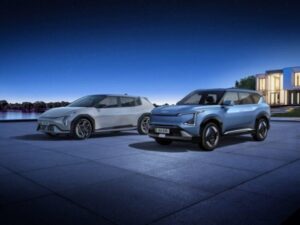The RAC Foundation’s latest analysis reveals that zero-emission vehicles now account for more than one in every 20 miles driven on UK roads – a milestone that positions electric cars as serious contenders to diesel for high-mileage driving.
The study examined MOT data from over 1.2 million passenger cars and found that zero-emission vehicles make up just 3.4% of the national fleet but cover a disproportionate 5.3% of all car miles traveled.
Zero-emission cars averaged 10,054 miles annually – trailing diesel vehicles by only 674 miles despite comprising mainly battery electric models with a small number of hydrogen fuel cell vehicles like the Toyota Mirai.
This performance gap has narrowed dramatically over the past decade.
In 2014, EVs covered only half the annual distance of diesel cars. Today they’re completing 94% of diesel mileage, with average EV distances increasing every year except 2021.
Steve Gooding, director of the RAC Foundation, said the data shows how quickly driver attitudes have shifted away from viewing electric cars as limited to short trips.
“Until recently new car buyers, often fleets and businesses, have looked to diesels when they’ve needed something capable of racking up the big miles whilst still offering reasonable fuel economy. Now it seems that fully electric cars are starting to take over where the diesel left off.”
The figures don’t capture the full picture of zero-emission driving. Hybrid vehicles operating in electric-only mode aren’t included in the mileage calculations, suggesting actual zero-emission miles are higher than reported.
Fleet buyers and high-mileage drivers are increasingly choosing EVs over traditional diesel options, attracted by improved range capabilities and favorable tax incentives.
EVs Challenge Diesel’s Long-Distance Dominance
Diesel has historically dominated the high-mileage market due to superior fuel economy on long journeys. The new data suggests this advantage is eroding as modern EVs offer comparable range – with many current models achieving nearly 300 miles between charges.
The shift represents more than just technological progress. It reflects changing perceptions about EV practicality for drivers who cover significantly more miles than the national average of 8,460 miles annually.
Gooding emphasized the broader implications: “The world where many saw the electric vehicle as being a second-car option, handy only for short trips, is changing rapidly to one where the battery-electric car is being bought to be a workhorse.”
The research feeds into the RAC Foundation’s Green Fleet Index, which tracks progress toward carbon reduction targets. The organization estimates that zero-emission vehicles need to account for at least 37% of all car miles by 2030 to meet climate goals without reducing overall driving distances.
Current zero-emission mileage sits at 5.3% – indicating substantial growth is still required over the next six years to reach the target threshold.





